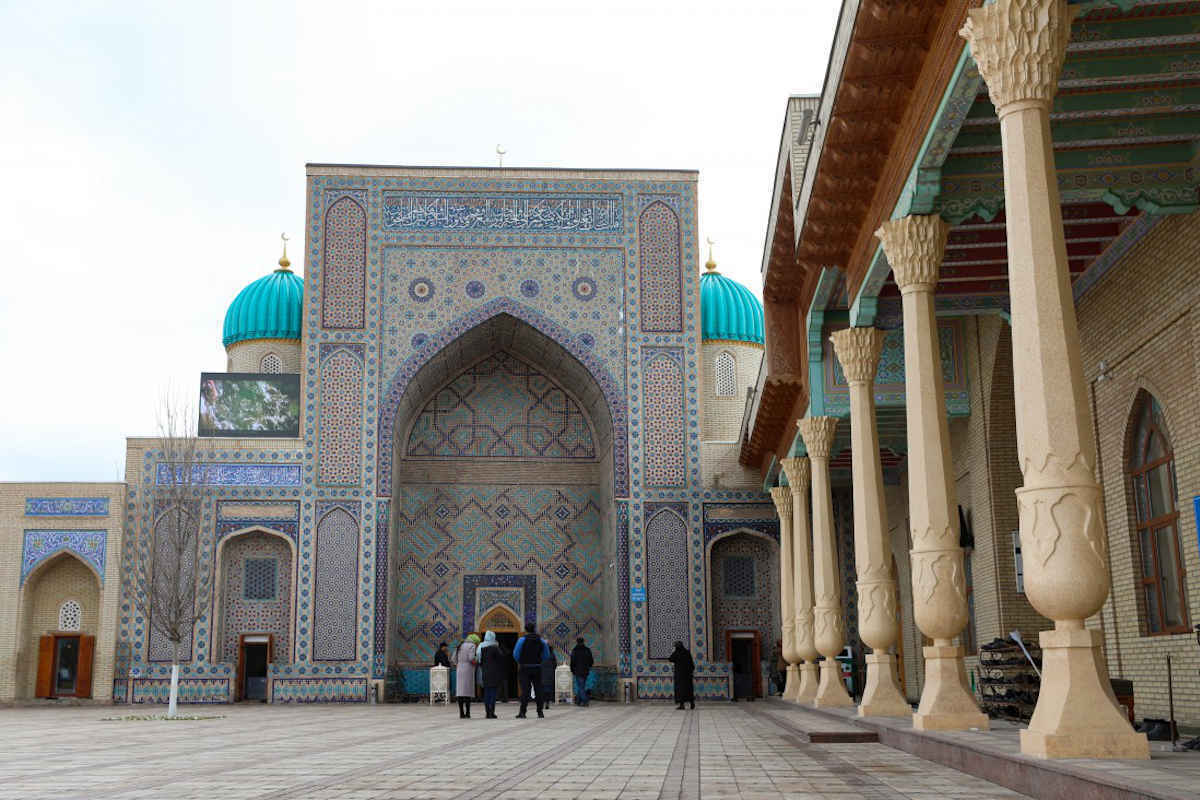Tashkent - Zangiota Complex
The Zangiota Complex (Zangi-ata, Zangi-ota) is one of the oldest structures in Tashkent. The complex is located 15 km from Tashkent in the small town of Zangiota. The complex was built in the centuries XIV-XIX. For several centuries the ensemble was rebuilt and extended with new buildings.

The mausoleum contains the remains of the great Sheikh Oy-Khodja Zangi-Ota. This nickname translates as “Dark Father”, which he received because of his earthy complexion. Zangiota was a great Sufi who was known and revered by the people both during his lifetime and after his death. The Sheikh was born into a noble Arab family in the late 12th century and preached the Islamic faith until his last days. Oy-Khodja was brought to train the Sufi sheikh Ahmad Yassawi, who was recognised as the spiritual leader of all Turkic tribes in Central Asia. During his life, Zangiota did much for the education and development of Islam among the people, as earned respect of the believers. Therefore, after his death, the ruler Amir Temur decided to build a memorial complex for the great sheikh.
The mausoleum of Zangiota is a popular place of pilgrimage not only for Uzbek Muslims but also for believers from other countries.
It is a custom in the families of Tashkent to bring a charitable gift to the Zangiota complex for every twelve years of life (aged 12, 24, 36 and more). It usually contains: 2 metres of white cloth, a packet of tea, a white headscarf, a kilogram of sugar and ingredients needed to cook pilaf.
In the 1990s, the number of people wanting to visit the mausoleum increased significantly, so it was decided to carry out a major reconstruction of the dilapidated complex.
The memorial complex is divided into three territorial zones. The first zone includes buildings constructed in the XIV-XIX centuries, the second zone houses the cemetery with the mausoleum of Anbar-ona, the wife of the great Sufi, while the third zone is for the addition of an extensive garden. The main zone houses the buildings such as the mausoleum of Zangiota, the mosque, the minaret and the associated courtyard.
You can enter the complex through the door, which is located in a large portal decorated with colourful mosaic. It is laid out in patterns and completed with Arabic ligature. The portal was built during the reign of Mirzo Ulugbek, the grandson of Temur. In addition, the entrance is adorned by two towers to the right and left of it. In the southern part of the complex there is a mosque built in the 19th century by a local judge.
In the XVIII-XIX centuries, a new building of the Muslim theological school, called Madrasa, was added to the ensemble of buildings. It has a square perimeter and used burnt bricks as material for its construction. The building has a trapezoidal courtyard where the windows of the students’ cells used to be.
The main attraction of the complex is the Zangiota mausoleum itself, it consists of several chambers. The appearance of the stone tombstone, decorated with magnificent artistic carvings, has been preserved since its construction. On it are inscriptions in Arabic, namely quotations from the Koran and traditional Muslim wishes. An asphalt path leads from Zangiota’s memorial to his wife’s mausoleum. The second funerary complex was built at the end of the XIV-beginning of the XV century. It is a one-chamber building made of brick.
The wife of the venerable Sheikh Anbar-ona is considered the patron saint of women and mothers. Muslim women come to her tomb and ask for children or prosperity in the family. In order for their wishes to come true, they have to walk clockwise around the mausoleum 3 times (nothing to do with Islam, in Islam such rituals are forbidden).
There is an atmosphere of triumph and serenity on the territory of the complex. Due to the many fountains, artificial springs and trees, it is always cool, the paths and lawns are well-kept and the grass is mown regularly. For the comfortable stay of pilgrims, there are places to rest in the form of benches and cosy pavilions, car park, tea house. You should come here at least for a few hours to have a quiet look at all the structures, feel the atmosphere of the sacred place and learn more about the traditions and culture of Uzbekistan.
